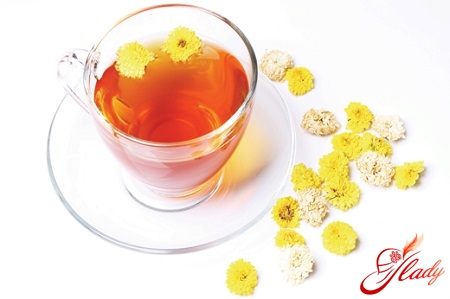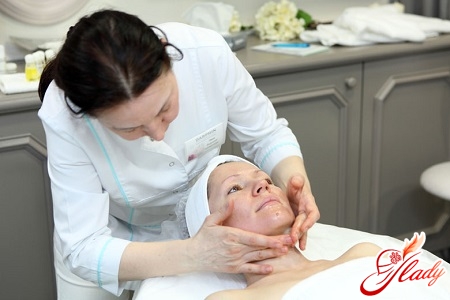
Bronchitis is an infectious disease,accompanied by diffuse mild bronchial inflammation. And the main symptom of this disease is a cough. Then when the disease lasts less than three weeks, you can already talk about acute bronchitis. Then, when the symptoms of bronchitis appear at least 3 months throughout the year and last 2 years or more, you can safely establish a diagnosis of chronic bronchitis. But this is provided that the person does not have any diseases of the bronchopulmonary system or ENT organs, which could cause such symptoms. With chronic bronchitis, coughing with sparse sputum and the appearance of shortness of breath with any physical exertion may well be permanent symptoms that will accompany the patient throughout his life. In this case, the exacerbation of such bronchitis is confirmed when there is a marked increase in the above symptoms: increased cough, increased volume of sputum, increased shortness of breath, increased body temperature, etc. Any bronchitis, especially acute, very rarely runs in isolation. Often it is combined with the appearance of rhinitis, in other words, a runny nose, tracheitis and other similar symptoms. This condition affects the overall clinical picture. If the onset of the disease is accompanied by shortness of breath, then here you can talk about obstructive bronchitis. The cause of chronic bronchitis can be a bacterial, atypical or viral flora. The main bacterial pathogens of bronchitis are staphylococci, streptococci and pneumococci. Influenza viruses, respiratory syncytial type infection, adenovirus, parainfluenza, etc. are considered causative agents of the viral nature of bronchitis. Rarely, but there are cases when the cause of bronchitis is a fungal infection. There are cases when there is a combination of different pathogens. For example, the disease can begin as a viral infection, and then bacterial pathogens can join it. And with all this, the viruses seem to open the gate for various bacteria, creating the most favorable conditions for their rapid reproduction. A similar variant of the current is considered the most common, which is always confirmed by a rapid rise in the incidence of it in the autumn and winter periods of time, while the seasonal spread of various viral infections is observed. Therapeutic measures performed with chronic bronchitis, almost in all, are determined by the clinical form of the disease and the peculiarities of its course. There is no general classification of chronic bronchitis. In modern medical practice, it is advisable to apply the following classification. On the etiology of bronchitis can be bacterial, viral, mycoplasma, from the effects of various chemical and physical factors, dust. On the basis of the inflammatory process, bronchitis is catarrhal, purulent, catarrhal-purulent, fibrinous and hemorrhagic. By its functional changes are non-obstructive, obstructive. If there is an exacerbation of chronic bronchitis, it can give respiratory (pulmonary) insufficiency, emphysema of the lungs. In some cases, bronchiectasis may develop. Symptoms of this disease are always the same.

Health food
People who have chronic bronchitis, treatmentrecommend starting with a balanced diet with enough vitamins. It is expedient for this to include in your diet raw fruits, vegetables, natural juices, yeast drinks. In chronic bronchitis with the separation of a large amount of sputum, a rapid loss of protein occurs, with a decompensated pulmonary heart, albumin loss can be increased in the direction from the vascular bed directly to the lumen of the intestine. Such patients are very helped by a diet rich in protein and transfusion of intravenously drip albumin, preparations of amino acids such as polyamine, alvezine and nephramine. When the onset of chronic bronchitis treatment is based on diet number 10, which limits the energy value, the amount of salt and liquid with increased potassium content.
Features diet, lifestyle in bronchitis
With a sharp exacerbation of bronchitis is traditionallya copious drink is recommended. For adults, the daily volume of fluid used should be at least 3-4 liters. Often suitable for such patients is an alkaline mors, preferably hot milk with addition of Borjomi in a percentage ratio of 1: 1. Diet during the day should contain a normal number of proteins, multivitamins. Against the background of a fairly high body temperature and general intoxication of the body, you can get hungry a little (but only if the body requires it), and in general, various limiting diets to such patients are contraindicated. Quite high efficiency is shown when using inhalations with the help of a nebulizer. And for a solution for such inhalations it is quite possible to use ordinary mineral water, medical saline or Ringer's solution. Such procedures are performed 2-3 times a day, and the course of treatment is from 5 to 10 days. The above manipulations contribute to the spitting of the sputum, help to facilitate the drainage of the bronchial tree, significantly reduce the inflammation. For such patients, it is extremely necessary to adjust their lifestyle with the main goal of eliminating the risk factors that cause infectious diseases of the upper respiratory tract. And in the first place it usually concerns smoking and all sorts of professional hazards, such as dusty production, activities with paintwork materials, frequent hypothermia. An excellent effect in chronic lung diseases is the use of respiratory gymnastics, for example, according to the Strelnikova method. This treatment also applies to chronic bronchitis. Without having exacerbations of a bronchitis, it is possible to do or make actions and by the general or common hardening. 
Treatment of chronic bronchitis with the help of folk remedies
A very popular folk remedychronic bronchitis are steam inhalations. For this purpose, it is recommended to breathe the steam, which is formed when cooking potatoes and other food products. For some people this method helps with careful use, but often its use can cause burns of mucous membranes and in the subsequent deterioration of the condition. To treat chronic bronchitis can and means of herbal dues. Usually, the following herbs are used for this: thyme and oregano, licorice and coltsfoot, linden, and plantain. To properly prepare the broth, 1 tablespoon of the prepared mixture should be poured into ½ liter of boiling water and let it brew for 2 hours. Take one third of the glass three times a day. The duration of such treatment is from 1 week to 10 days. Such a method is really effective only in a complex. No less effective are koumiss and goat's milk. During treatment, they are recommended to consume at least 1 cup, at least 3 times daily. The course of this treatment is 2 months. You can use another method. To do this, you need onions and honey, take it in quantities of 1 to 1, pass through a meat grinder. Use according to the following scheme: a tablespoon - twice a day, the duration of admission from 10 days to 2 weeks. Sometimes instead of onions you can use fresh garlic.
Bronchitis during pregnancy
Symptoms of chronic bronchitis in pregnant womendo not differ from bronchial symptoms in any other patients. And the main sign of bronchitis is a cough. But in such treatment there are a number of peculiarities, since many medications are banned for use during this period of life because of their negative effects on the fetus. For example, the use of derivatives of tetracycline, streptomycin and levomycetin is prohibited. Especially with caution should be applied eufillin. Of the antibacterial drugs permitted by modern medicine, one can mention vilprafen. It is a preparation with a high safety profile and normal antibacterial activity. For pregnant women, inhalation therapy is permitted.
Prophylaxis of chronic bronchitis
Modern medicine distinguishes several methods for the prevention of this infectious disease.
- Consumption of immuno-fortifying drugs andcomponents in the seasons of possible exacerbation, which include fall and winter. This method is most suitable for patients with chronic bronchitis or with frequent exacerbations of acute bronchitis. An excellent effect in this respect was given by the preparations bronchomunal, ribomunil, IRS-19. Dosage regimens are determined only by the attending physician. The variants of nonspecific immunocorrection include the regular intake of multivitamin complexes.
- Vaccination of patients. Given the high prevalence of pneumococcal infection, as well as its huge contribution to the emergence of this disease, most doctors recommend that patients at risk should always be vaccinated with the PNEVO-23 vaccine, which provides immune protection from this type of pathogen. The effect of this vaccination is enough for a five-year period. Also taking into account the fact that it is viruses and viral infections that are most often triggered by the appearance of bronchitis, annual vaccination of people who are at risk is recommended. Who is at risk? First of all, people who are more than 50 years old and those who suffer from chronic diseases of internal organs, such as the heart, lungs, kidneys, etc., belong to it. Traditionally, women who plan pregnancy and those whose professional activity is associated with close communication with people have been vaccinated - these are medical workers, teachers, sellers. Be sure to vaccinate those who have long received anti-coagulant drugs, which include acetylsalicylic acid, warfarin, etc.
- Clear adherence to simple basic personalhygiene, for example, frequent hand washing, the use of disposable shawls for the nose - this is a very simple method of preventing such infectious diseases.









